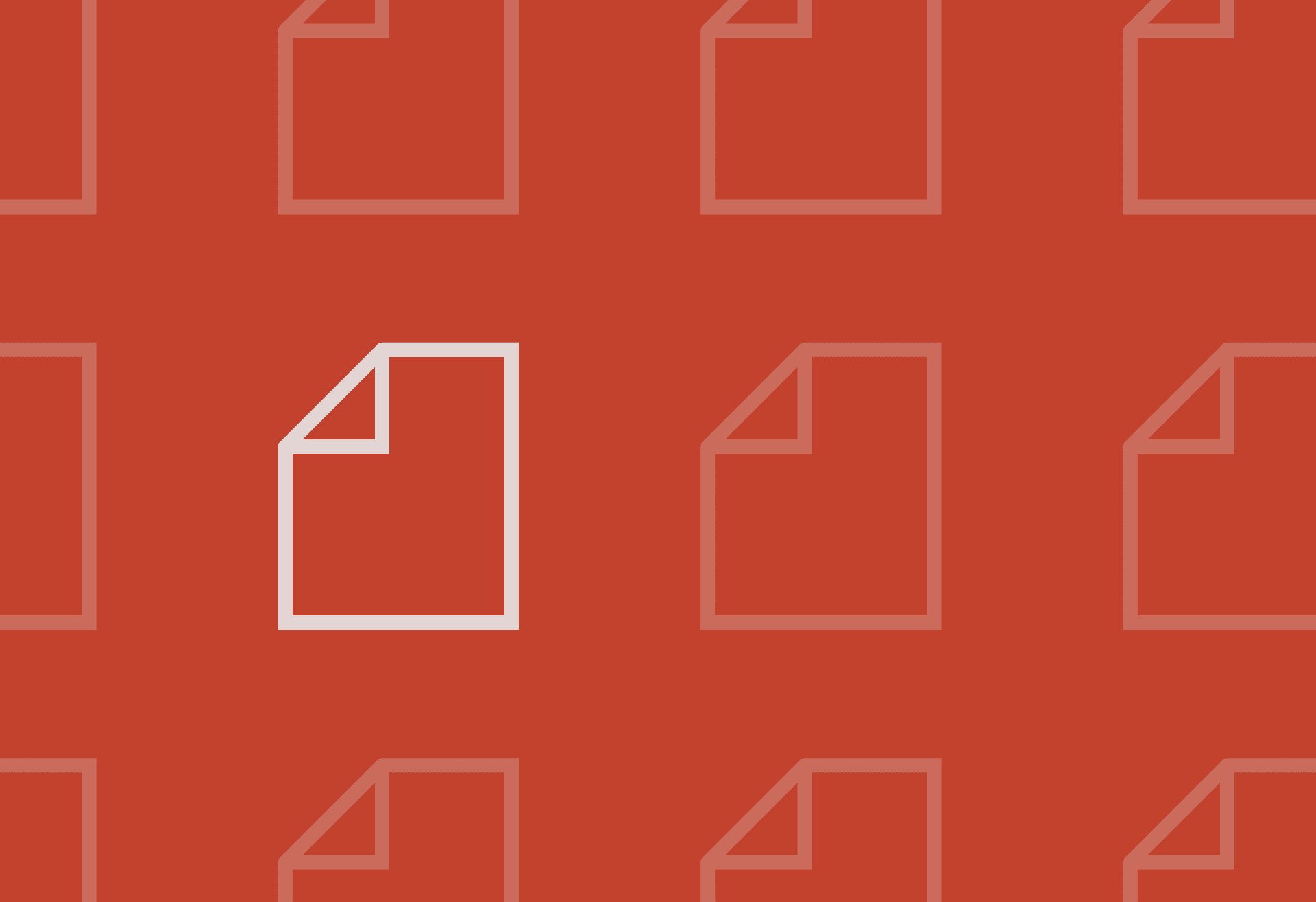
How to write a software RFP that sets you up for success

In the saturated and highly competitive software market, finding the perfect development partner to build a custom solution can feel like matchmaking, complete with a list of non-negotiables and inevitable compromises. Custom software development is also fraught with risk — risk of committing to a vendor that doesn’t understand your business goals, risk of disrupting your brand development strategy if something goes awry, and risk of losing money.
There's a way to minimize the risks: Create a request for proposal (RFP) and send it out to your potential partners. A sound RFP can efficiently communicate your needs and requirements to software development companies and streamline the entire vendor selection process.
If you elaborate on all the essential details and core features of the product you want to build in a well-crafted RFP, you head off sorting through proposals from vendors that don't fully understand the scope of work, wasting your precious business time (and theirs!). Moreover, a well-written RFP can set your entire project up for success if it lays out benchmarks, expectations, and your timeline.
What is an RFP for software development?
For businesses looking to solicit bids from software development companies, a request for proposal is an essential document that should be assembled before you reach out to vendors. A software RFP includes critical information such as your project goals, specific software and product requirements, and expected delivery date.
Software development RFPs: A must or a nice-to-have?
Since assembling a formal software request for proposal requires significant time and effort, some companies are skeptical about the value of both the process and the document: They wonder if the resources that they pour into the RFP really will actually increase their chances of finding a perfect-fit software development partner.
If you're not convinced that a full RFP is worth your time, you can produce an RFI (request for information) as an alternative. An RFI is an abbreviated version of a formal software RFP that lists essential points about your project needs along with critical questions to vendors, e.g., their relevant experience, developer skills, and pricing. You can also think of an RFI as a preliminary framework for creating an RFP.
In our experience, a formal request for proposal makes sense for complex software development projects. Once you've developed an in-depth plan for your project, defined its objectives, and determined the purpose of your product, you'll likely find that listing the criteria for features, user experience, process automation, system abilities, and entity attributes flows more easily.
There are no hard and fast rules for what format or length an RFP should be, but you should always include a clear outline of the requirements and aspirations for this project that can guide vendors so they can determine if they can meet your expectations.
Benefits of a software RFP

Think of your software request for proposal as a valuable asset for your project rather than as a pesky task. When it comes to the entire scope of the software development process, the benefits of preparing an RFP far outweigh the drawbacks.
A clear vision for your project
An effective RFP clearly conveys to vendors that you're serious about your project or idea. It also builds your credibility by demonstrating that you've thought through the details.
Take the time to describe:
- the market you'll be entering and your main competitors
- your target users
- strengths and weaknesses of your planned product
An honest assessment will give software vendors the perspective they need to articulate their value and identify parts of your product that they might not have experience in.
Better chances of finding the right match
A well-written software development request for proposal will dramatically increase the chances that you get the right match: A vendor who can provide exactly what you need. When you include a scope of work that describes the desired outcomes and establishes milestones, timelines, and deliverables, you have what you need to negotiate, and vendors have a clear framework that they can respond to in their bid.
Time savings
Many businesses have an unjustified resistance to using RFPs, seeing them as nothing but expensive and inefficient wastes of time.
But as we've seen again and again here at Vention, a thorough RFP winds up saving time because you don't have to repeatedly answer questions about the project details. An added bonus: The more information you include about the project, the less likely it is that critical mistakes will occur during development — mistakes that will inevitably take time to rectify.
Remember as well that a detailed RFP can help reduce the number of responses you have to wade through. Vendors who aren't qualified won't bother (ideally!), so you'll face a smaller pile of good proposals rather than a larger pile that includes bids that are less than ideal.
Core components of a software development RFP
There is no one-size-fits-all template for writing an RFP for software development, but it does help to include the following sections for consistency.
Project summary and сompany overview
Summarize your project goals and requirements. Give brief but comprehensive information about your project and specify your needs from a business rather than a technical point of view. Include basic requirements for your software and the restrictions of your current solution. Explain what processes related to software development you would like to improve. Also include details on your target users: Who are they? What’s important to them? What problem will your product solve for them?
A short description of your company will help software vendors better understand your business background and what solution would best align with your business vision.
Project scope and expected deliverables
Project scope is the core component of your RFP, and it will likely be the longest section. Software development vendors will rely on the details specified here when calculating costs and drafting their offers.
When describing your project's scope, consider including the following:
- Infrastructure requirements and preferred tech stack — Any startup looking for a software vendor to build their product should understand whether a potential development partner has adequate infrastructure capabilities in terms of scalability and security. Request information on available hardware and software infrastructure, protection of intellectual property rights, data security measures, and access management.
- Product requirements — Product requirements vary dramatically depending on product features. Thinking through the following points might help you describe what you expect to achieve with your final product:
- Project management — In this section, include your requirements for the vendor's project management tools and methodologies, as well as software development and delivery methods. If you want to implement Agile methodologies, e.g., Scrum, Lean, or Kanban, into your software development cycle, clearly state it in this part of the RFP. You can also specify your expectations for the team structure (fully remote, dedicated, or hybrid) and methods of communication within the project team.
- Quality assurance and testing — Since quality assurance is vital for successful software delivery, consider including questions about tools and approaches used by a vendor for testing and quality control and relevant documentation standards. Consider asking how vendors would adapt their testing process to your project.
Visuals
Sometimes images speak louder than words. Include a simple schema in your RFP that describes platform architecture, database structure, or user flow. Visuals don't need to be pixel perfect — tools such as MindMeister can help you create mind maps.
You can also collaborate with a designer to create a mockup and product prototype. With accurate designs for each view of the product (or even a clickable prototype), vendors and engineers can better understand how the product is supposed to function and offer an appropriate solution.
If you don't have a designer on your team, hire a freelancer from a platform like 99designs, Dribbble, Behance, and Upwork. These networks can help you find a creative whose style will correspond to your visual taste, preferences, and budget. You could also use Figma, Sketch, Mockplus, Framer, or Proto.io to mock up your product.

Timeline
Depending on the complexity of your project, you might have different deadlines for each phase within the proposal submission process, like the following:
- Anticipated project kickoff
- Timeframe for initial interviews with vendors or Q&A sessions
- Deadline for receiving formal responses from vendors
- Date for sending notifications to shortlisted candidates
- Timeframe for holding final interviews
- Date for selecting your software development vendor
Budget
For a startup, the cost of software development might be the major factor when selecting a vendor. While you might be inclined to go for the cheapest bid, specify a range based on your budget so you don't discourage well-qualified vendors from bidding.
Also consider including an estimate template that breaks down the costs for each required feature of the product. This document can be organized in a spreadsheet divided into separate tabs listing requirements for each functional area.
Bid format and vendor requirements
To streamline the process of comparing vendors' offers and selecting your development partner, prepare a ready-to-fill template in the format that suits you best. Clearly state the information you need from a vendor with prompts and explain the structure they should follow when preparing their bids, i.e.:
- Company overview
- Project timeline and major milestones
- A description of their solution, development process, and methodology
- Team availability
- Qualifications of their proposed team members
- Post-development training and support
- Recent design and development examples, including similar projects and relevant experience
- Rates and pricing model
- References from clients
- Cost breakdown/budget
Guidelines like this help vendors prepare their bids, but they also save you time and hassle: When it comes time to review competing proposals, you'll find it's much easier to compare them if they're all written in the same format.
Selection criteria
Criteria for selecting a software vendor will differ from project to project, but you can still streamline the selection process by considering:
- A company's tech expertise and experience with relevant projects
- Cost of software development and pricing model
- Approach to talent acquisition and staffing
- References
- Data security and intellectual property terms
Best practices for writing a good software RFP

The ultimate goal of any RFP is to find a solid software development partner — one with the hands-on expertise and knowledge to complete the project successfully. If you want to work with a well-qualified vendor on your project, consider following these tips when preparing your request for proposal.
Write clearly and concisely
Simplicity matters. Keep the RFP crisp and to-the-point. While that can be a challenge since an RFP needs to give as many details as possible, disciplined writing will help highlight critical project points and avoid cluttering the document with unnecessary information. Also, if you're clear and concise, then you set the stage for vendors to respond in the same way.
Avoid jargon
Use terminology that is specific to your industry and the relevant technology, but don't overdo it to the point that you use jargon. For example, if your project is in the healthcare industry, avoid narrow and rarely used professional terms and specific abbreviations that are so particular to the industry that no one outside of it will know what you're referring to; more general terms will help a potential software vendor better understand your requirements.
Proofread!
Even when you're writing about software in an RFP, tidy, error-free copy matters — it's a reflection on you as a client and as a company. (Pro tip: If you're not already using Grammarly, like many of us do at Vention, check it out! It's an AI-powered writing assistant that makes finding typos and less-than-perfect so much easier.)





